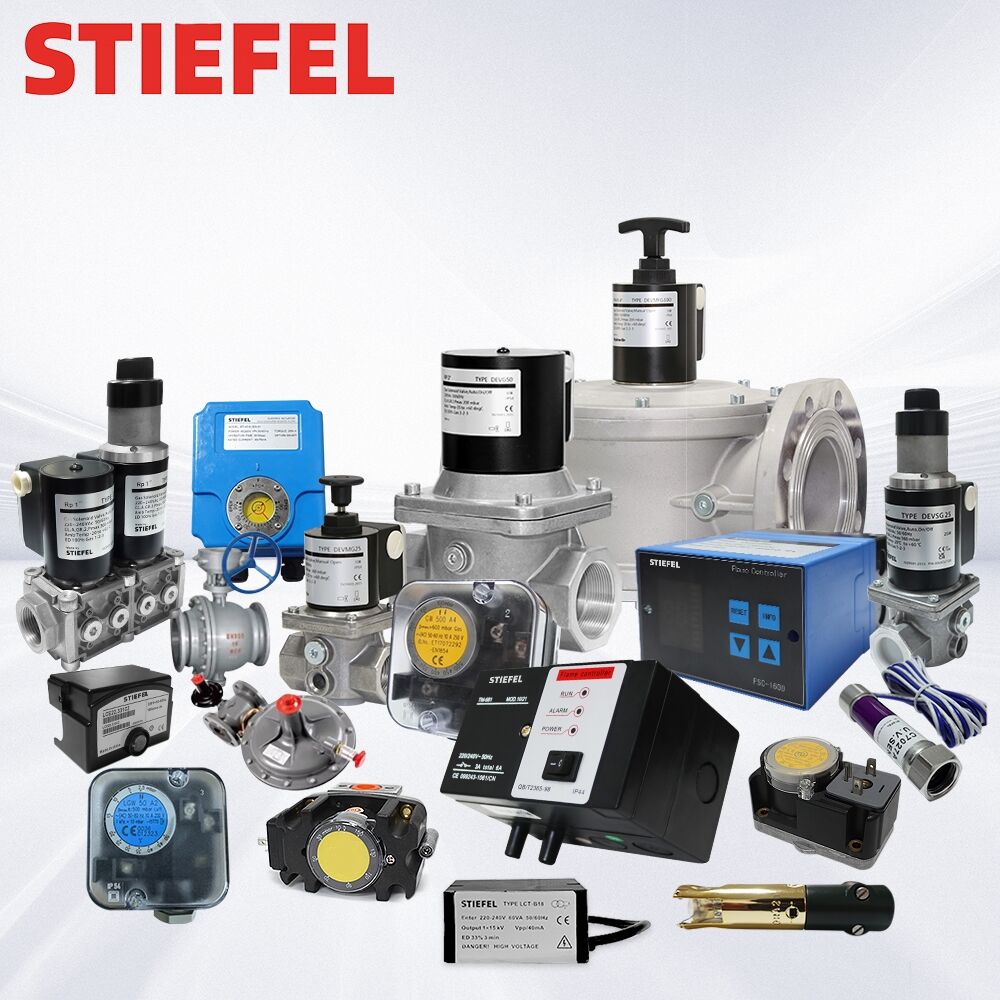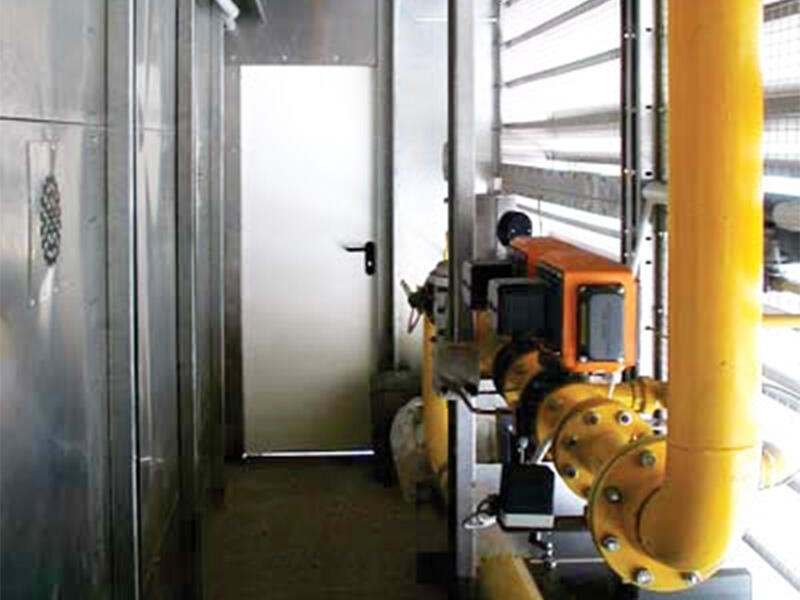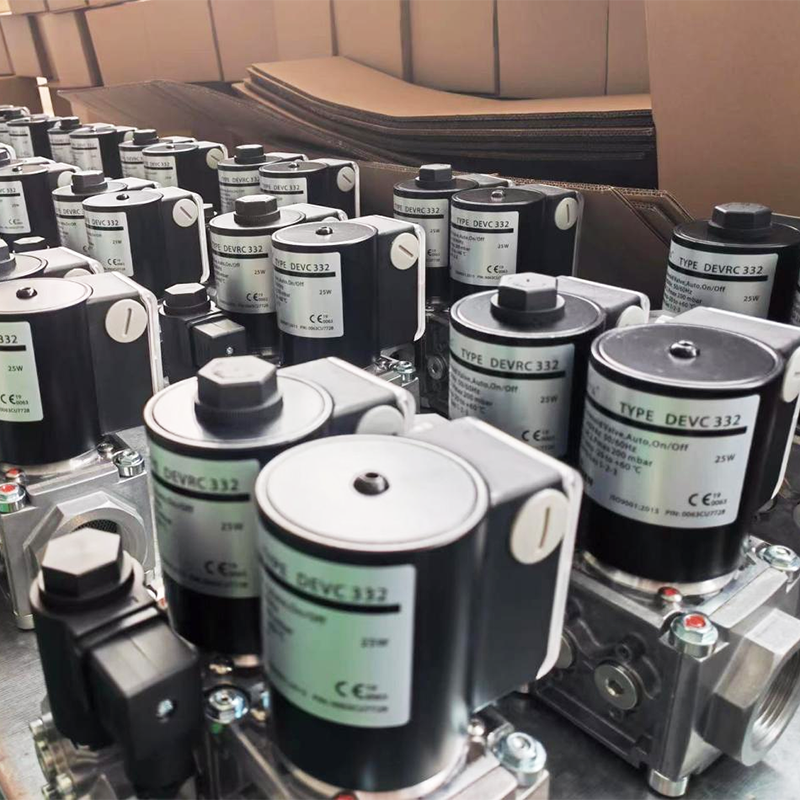Understanding Core Components of a Gas Burner System
The reliability of any gas burner system really depends on how well it brings together all those different parts - mechanical bits, electrical components, plus all the safety features - so everything works smoothly together. Things like the gas train, those electronic control systems we see nowadays, and the actual ignition mechanism are absolutely essential for making sure combustion happens efficiently while keeping things safe. Manufacturers have been putting a lot of work into their latest models over the past few years. These new systems come with built-in fail-safes just in case something goes wrong, along with smart controls that adjust automatically based on conditions. The improvements in combustion tech since around 2020 have made these systems much safer and more efficient than what was available before.
Key Gas Burner Components and Their Functions
At its core, a gas burner system comprises three functional subsystems:
- Gas train: Manages fuel delivery through pressure regulators, shut-off valves, and leak detection sensors
- Combustion assembly: Mixes gas and air in precise ratios via burner heads and diffusers
- Control module: Processes sensor data to adjust actuators and maintain stable combustion
These components operate in tandem to achieve thermal outputs ranging from 100 kW to 20 MW in industrial applications.
The Role of the Gas Train: Valves, Regulators, and Safety Integration
What sets the gas train apart is how it handles both regular fuel adjustments and emergency situations, making it essentially the front line when something goes wrong. The pressure reducing valves keep things running smoothly by maintaining inlet pressures somewhere around 7 to 14 kilopascals. Meanwhile, those backup shut off valves kick in fast too they can cut off the fuel supply within just two seconds if pressure gets out of whack. Meeting NFPA 85 standards means implementing safety at three different levels throughout the system, which adds another layer of protection against potential failures.
| Component | Primary Function | Response Time |
|---|---|---|
| Emergency Valve | Full fuel cutoff during critical failures | <1 second |
| Vent Valve | Pipeline depressurization | 3–5 seconds |
| Pressure Switch | Continuous line monitoring | Real-time |
Electronic Control Systems and Subsystem Interdependencies
Burner control systems today rely heavily on PID algorithms to manage air dampers, gas valves, and when things actually ignite. Industry studies looking at how best to optimize combustion show that when using networked input/output modules, most systems stay within half a percent of their target temperature settings during roughly 89 percent of normal operations. What makes these systems stand out is their ability to handle emergency situations first while still managing impressive turndown ratios as high as 10 to 1. This flexibility allows plants to adjust their heat output according to demand without sacrificing safety or efficiency, which matters a lot in industrial settings where energy costs can fluctuate dramatically.
Ignition, Flame Detection, and Control Loop Coordination
UV-based flame sensors and high-energy ignition transformers (15–20 kV output) achieve 99.8% successful ignition rates in under 5 seconds. Continuous ionization current monitoring verifies flame presence, triggering automatic reignition sequences within 200ms of flame loss. This rapid response prevents unburned gas accumulation, adhering to EN 746-2 safety protocols for industrial thermal systems.
Matching Components to Fuel Type and Flow Requirements
Impact of Gas Type on Material Compatibility and Component Longevity
What kind of fuel we're dealing with really determines what materials work best. For natural gas installations, copper-nickel alloy pipes are pretty much standard because they stand up well against hydrogen sulfide corrosion. Propane setups usually go with stainless steel regulators since these can handle the increased vapor pressure without breaking down. According to recent research published last year in material sciences, mismatched materials in gas burners actually cut their lifespan by around 32% after just 18 months of operation. Things get even worse when working with biogas mixtures. The acid content tends to eat away at seals, which is why many technicians now specify upgraded elastomer components for these systems to avoid costly failures down the road.
Sizing Gas Lines and Calculating Flow Rates for Optimal Performance
Accurate flow rate calculations prevent pressure drops exceeding 10% – a threshold linked to 15% efficiency loss in combustion systems. Use this formula for initial sizing:
| Pipe Diameter (inches) | Maximum Flow (CFH) | Typical Application |
|---|---|---|
| 0.5 | 130 | Residential boilers |
| 2 | 1,200 | Commercial burners |
| 4 | 4,800 | Industrial processes |
Factor in line length, elevation changes, and simultaneous device usage when applying the Ideal Gas Law (adjusted for real-world conditions). Oversized lines create ignition lag, while undersized paths trigger safety shutoffs.
Using Gas Filters and Strainers to Maintain System Integrity
Contaminants as small as 5 microns – 1/10 the width of human hair – jam pilot orifices and erode valve seats. Dual-stage filtration (particulate removal + moisture separation) reduces maintenance intervals by 60% according to combustion safety protocols. Position strainers upstream of regulators using Y-pattern designs for uninterrupted flow during cleanouts.
Ensuring Safety with Proper Pressure Management and Protective Devices
Automatic and Manual Shut-Off Valves for Emergency and Maintenance Use
Modern gas burner systems use redundant shut-off valves to mitigate combustion risks. Automatic valves respond to flame failure or pressure anomalies within 250 ms (NFPA 86-2023), while manual valves allow operators to isolate sections for maintenance. Dual-seal valves with <3% leak rates prevent gas accumulation during shutdowns.
Overpressure and Underpressure Protection Mechanisms
Pressure relief valves activate at 110% of operating pressure to prevent pipe bursts, while low-gas-pressure switches halt combustion below 4" w.c. (water column). Critical systems combine spring-loaded and pilot-operated relief valves to cover both gradual pressure spikes and catastrophic failures.
Pressure Switches for Air and Gas Monitoring in Safe Combustion
Differential pressure switches verify air-to-gas ratios stay within ±5% of ideal stoichiometric levels. A 2023 ASHRAE study found dual-input switches reduced combustion incidents by 37% compared to single-sensor designs.
| Parameter | Safe Range | Response Time |
|---|---|---|
| Gas Pressure | 7–14" w.c. | <1.5 sec |
| Combustion Air | 0.2–0.6 psi | <0.8 sec |
Balancing Sensitivity and Reliability in Safety System Triggers
Calibration protocols align flame rectification sensors with valve response curves to prevent false shutdowns. Systems using UL 296-certified components demonstrate 99.98% reliability in field tests while maintaining sensitivity to flame failure within 0.8 seconds.
Optimizing Combustion Efficiency Through Precision Control
Air-to-Fuel Ratio Control for Stable and Efficient Combustion
Getting the right mix of air and fuel stops wasted energy and makes sure everything burns properly. When systems run with ratios that aren't quite right around the standard 10:1 mark for natural gas they actually waste between 3 and 8 percent efficiency. That kind of inefficiency adds up fast too costing about seven hundred forty thousand dollars extra each year at medium sized plants according to research from ProFire Energy back in 2023. These days newer equipment comes equipped with oxygen sensors that tweak the airflow automatically during operation which helps bring down those excess oxygen levels in exhaust gases to three percent or below.
Managing Excess Air: Trade-offs Between Efficiency and Emissions
Excess air levels above 15% lower flame temperatures, reducing thermal NOx emissions but increasing heat loss through exhaust. Advanced controllers balance these factors by maintaining 10–15% excess air – the “sweet spot” where CO emissions stay below 50 ppm while preserving 92–95% combustion efficiency.
Turndown Ratio and Burner Flexibility Across Load Conditions
High turndown ratios (10:1 or higher) enable burners to maintain stable flames at 10% of maximum capacity, critical for processes with variable thermal demands. This flexibility reduces fuel waste during low-load periods by 18–22% compared to single-stage systems based on 2023 burner performance benchmarks.
Burner Control Systems: Actuators and Controllers for Dynamic Response
Proportional-integral-derivative (PID) controllers paired with electric actuators enable millisecond adjustments to gas valves and air dampers. These systems integrate real-time data from pressure transmitters and flow meters to maintain ±0.5% setpoint accuracy across load changes. Multi-loop control architectures automatically compensate for ambient temperature shifts and fuel quality variations.
Reliable Ignition and Continuous Flame Monitoring
A gas burner system’s operational safety hinges on two interdependent processes: consistent ignition and real-time flame monitoring.
Ignition System Components: Electrodes and Transformers
The spark that starts combustion comes from ignition electrodes, and transformers boost the voltage up to around 10-15 kilovolts needed for creating a good arc. According to some industry research, roughly two thirds of all ignition problems happen because electrodes get dirty or have incorrect spacing between them (Tulsa Heaters Midstream published their findings in 2024). Many newer systems now come equipped with built-in diagnostics that monitor how resistance changes within those ignition circuits. These alerts give techs warning signs about parts wearing out long before they actually fail, which saves time and money on unexpected breakdowns during operation.
Flame Detectors: Types and Critical Safety Functions
Combining UV/IR flame scanners with rectification based flame rods gives operators multiple ways to check if the burner stays lit properly. According to latest industry standards, when plants use at least two different detection systems together, they see around a 40% drop in unwanted shutdowns especially where there's lots of equipment vibration going on. The Safety Instrumented Function system cuts off fuel supply pretty quickly after detecting no flame anymore usually somewhere between 2 and 4 seconds which stops dangerous buildup of unburned gases before it becomes a problem. Keeping these detectors aligned correctly matters a lot for performance. Maintenance crews should clean those lenses every three months to make sure they still pick up the right flame signals and don't trigger false alarms unnecessarily.
FAQ
What are the key components of a gas burner system?
The key components include the gas train, combustion assembly, and control module. These work together to ensure efficient combustion.
Why is material compatibility important in gas burner systems?
Using the right materials is crucial for avoiding corrosion and ensuring longevity, especially when dealing with different fuel types.
How do pressure management devices enhance safety in gas burner systems?
Pressure management devices such as relief valves and pressure switches help prevent overpressure situations and keep the combustion process safe.
What is the effect of incorrect air-to-fuel ratios?
Incorrect ratios can waste energy, reduce efficiency, and increase operational costs. Proper control is needed to maintain optimal ratios.
How do modern systems ensure reliable ignition?
They utilize advanced components like ignition electrodes and transformers, along with diagnostics to monitor and maintain ignition reliability.



